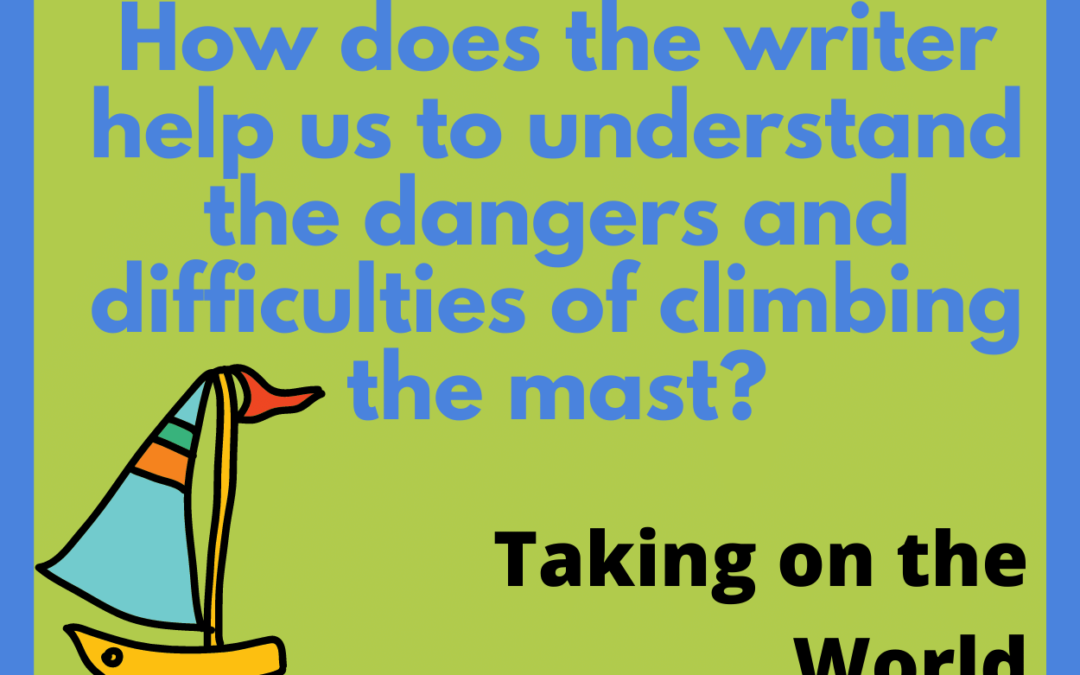Edexcel English IGCSE: From Taking on the World by Ellen MacArthur
Q1. How does the writer help us to understand the dangers and difficulties of climbing the mast?
In your answer, you should write about:
- the weather and sea conditions;
- what we learn about the writer;
- the language that the writer uses.
You should refer closely to the passage to support your answer. You may use brief quotations.
Edexcel English IGCSE Model Essay by an Expert
By emphasising the violence of the weather and her own vulnerability, and by using comparatives and idioms, Ellen MacArthur portrays the danger of her task to the reader.
MacArthur’s task is made particularly difficult by the power of the sea, made worse on this occasion by the adverse weather conditions. The writer emphasises this with violent language and imagery. When describing the waves, she uses vivid action verbs, such as “ploughed into”, “thrown” and “smacking”. Such strong vocabulary highlights the strength of the sea in such windy weather, assisting the reader in understanding the difficulty of her task. The writer also employs imagery, such as “the sea stretched out forever”. This hyperbole creates a frightening sense of isolation. Thus the reader comes to appreciate the danger of MacArthur’s situation; if she were in trouble, no-one could help her.
In this passage, MacArthur portrays herself as vulnerable, despite her extensive experience and technical ability. At the start of the passage, the reader is informed that she is younger and smaller than the other competitors, meaning that the tasks involved in the race might be more difficult for her. On the other hand, the reader learns that MacArthur is clearly very skilled at sailing; this is in part revealed through the technical language she uses, such as “halyard” and “jumar”. She is thus portrayed as very capable, and yet she still struggles to climb the mast. One reason for this is because she has no control over the boat while she is up the mast. This is captured in the simile, “as if I was stepping on to the moon”, which captures the strange, alien nature of being so high above her boat. Because of the juxtaposition of MacArthur’s technical expertise with the revelation that she finds climbing the mast such a challenge, the reader’s awareness of the difficulty of the task is heightened.
Several language techniques are employed to portray the difficulty and danger of MacArthur’s ascent and descent of the mast, such as comparatives and idioms. Throughout the description of the climb, the writer uses comparatives to display the increasing difficulty of her task: “harder and harder”, “increasingly heavy”, “more violent” and “worse than ever”. This creates a sense of building difficulty. The reader also realises how dangerous the situation is through MacArthur’s fear; she uses the hyperbolic idiom “I had my heart in my mouth” to provide a graphic idiomatic description of her terror. This allows the reader to sympathise with her and appreciate the life-threatening nature of her task.
Although MacArthur is presented as brave and capable, the terrible conditions and the difficulty of her task put her in danger, and show how challenging it is to climb a mast while sailing alone.



